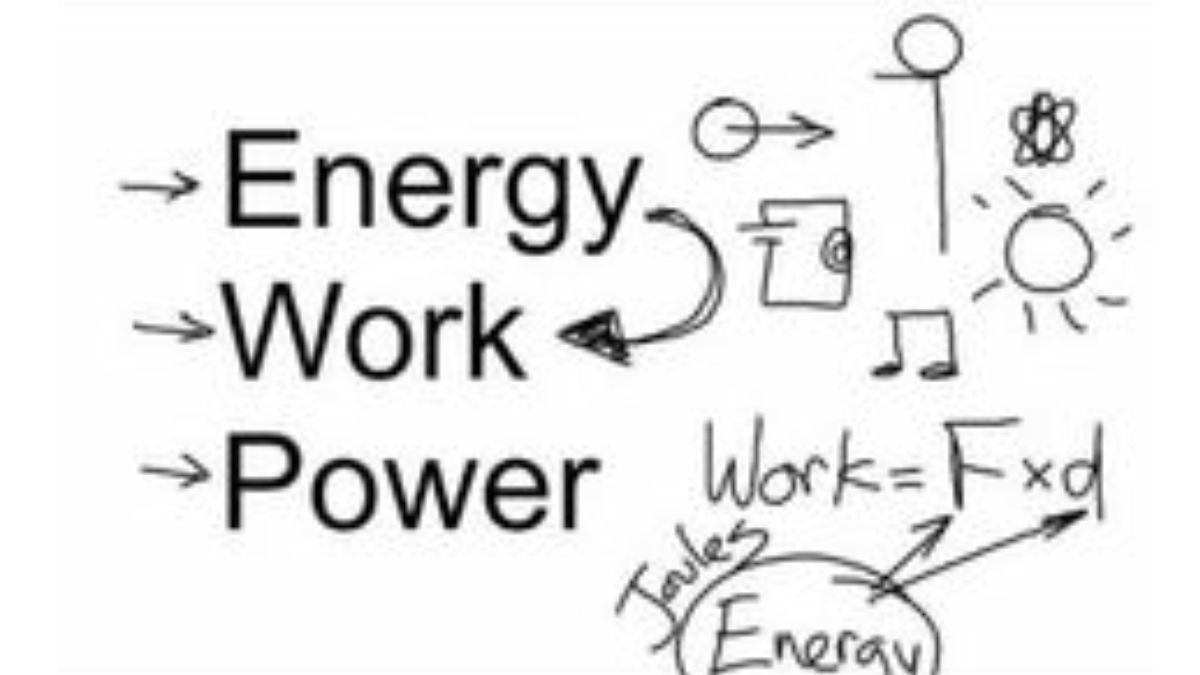As the preparation phase for the NEET 2026 aspirants is on, all the aspirants for the national level examination might be looking forward to some of the most useful tools for the preparations like the NEET Sample Papers, NEET Syllabus 2026, NEET Mock Test, etc.
To assist all such aspirants, we have the NEET Physics MCQs for Work, Energy and Power Chapter in this article so that the aspirants, while studying this chapter, can get an understanding of the types of questions being asked in the previous year’s NEET exam from this chapter. Scroll down in the article below for the MCQs.
NEET Physics MCQs for Work, Energy and Power Chapter
The “Work, Energy, and Power” chapter is an essential part of the NEET Physics syllabus. Understanding the concepts and practicing multiple-choice questions (MCQs) from this chapter can help aspirants excel in the exam. This chapter forms the foundation of mechanics and plays a critical role in various problems, ranging from basic concepts to complex applications. To assist with exam preparation, this blog gets into the important concepts of work, energy, and power and provides NEET-style MCQs with detailed explanations to ensure aspirants understand the key topics perfectly.
Key Concepts of Work, Energy, and Power
Before solving the NEET Physics MCQs for Work, Energy and Power Chapter all the aspirants need to understand the basic concepts of all the topics discussed in the chapter. Therefore, to help students with their concept understanding we have given an overview of all the important topics from this chapter in the article ahead:
1. Work
Work is done when a force is applied to an object, and it moves in the direction of the applied force. Mathematically, work is expressed as:
Where:
-
is work,
-
is the force,
-
is the displacement,
-
is the angle between the force and displacement vectors.
2. Kinetic Energy (KE)
Kinetic energy is the energy possessed by an object due to its motion. It is given by the formula:
Where:
-
is the mass of the object,
-
is the velocity of the object.
3. Potential Energy (PE)
Potential energy is the energy stored in an object due to its position in a force field (like gravitational potential energy). For an object at height
above the Earth’s surface, the potential energy is given by:
Where:
-
is the mass of the object,
-
is the acceleration due to gravity,
-
is the height.
4. Work-Energy Theorem
This theorem states that the work done on an object is equal to the change in its kinetic energy:
Where:
is the final kinetic energy,
is the initial kinetic energy.
5. Power
Power is the rate at which work is done or energy is transferred. It is mathematically expressed as:
Where:
-
is power,
-
is the work done,
-
is the time taken.
Benefits of Solving NEET Physics MCQs for Work, Energy, and Power Chapter
Solving NEET Physics MCQs from the “Work, Energy, and Power” chapter provides a wide range of benefits that can significantly improve your understanding and exam performance. Here are the key advantages:
- Enhances Conceptual Clarity – Work, energy, and power are fundamental concepts in physics. By practicing MCQs, you reinforce your understanding of these topics, ensuring that you grasp the concepts clearly. This leads to better retention and application of formulas, making complex problems easier to solve.
- Improves Problem-Solving Skills – Physics MCQs require critical thinking and the application of various formulas. Regular practice helps you sharpen your problem-solving skills, enabling you to approach even tricky questions with confidence. It also trains you to quickly identify the right approach for solving different types of problems.
- Time Management – NEET is a time-bound exam, and managing time efficiently is crucial. Practicing MCQs on Work, Energy, and Power helps you develop the speed needed to solve problems quickly without compromising accuracy. This is particularly important during the actual exam, where time is limited.
- Familiarizes You with Exam Pattern – Solving NEET-style MCQs helps you get familiar with the exam pattern, ensuring you’re prepared for the kind of questions that might appear. It helps you understand the phrasing and structure of questions, which is important for performing well on the actual exam day.
- Strengthens Application of Formulas – MCQs test your ability to apply various formulas in different contexts. Practicing these questions ensures you understand not only the formula but also when and how to apply it. This reduces the likelihood of errors during the exam.
- Identifies Weak Areas – By solving multiple MCQs, you can identify areas where you may be struggling. This helps you focus on topics or concepts that need more attention. Targeted practice improves your overall performance and boosts your confidence in the subject.
MCQs for Work, Energy, and Power Chapter
Here are some NEET-style MCQs based on the chapter “Work, Energy, and Power.” These questions are designed to test both conceptual understanding and problem-solving skills.
Question 1: A force of 10 N is applied to a box of mass 2 kg, causing it to move 5 meters in the direction of the force. What is the work done by the force?
-
a) 10 J
-
b) 20 J
-
c) 30 J
-
d) 50 J
Answer: b) 20 J
Explanation:
Work done is given by:
Substituting the given values:
Thus, the work done by the force is 20 J.
Question 2: A body of mass 4 kg is moving with a velocity of 3 m/s. What is its kinetic energy?
-
a) 12 J
-
b) 18 J
-
c) 24 J
-
d) 36 J
Answer: b) 18 J
Explanation:
Kinetic energy is given by:
Substitute the values:
So, the kinetic energy is 18 J.
Question 3: A 5 kg object is placed 10 m above the ground. What is its gravitational potential energy? (Take
)
-
a) 25 J
-
b) 50 J
-
c) 100 J
-
d) 200 J
Answer: c) 100 J
Explanation:
Gravitational potential energy is given by:
Substitute the values:
Thus, the potential energy is 100 J.
Question 4: A person lifts a 10 kg box to a height of 5 meters in 4 seconds. What is the power expended by the person in lifting the box? (Take
)
-
a) 50 W
-
b) 100 W
-
c) 200 W
-
d) 250 W
Answer: b) 100 W
Explanation:
First, calculate the work done (which is equal to the change in potential energy):
Now, calculate the power:
So, the power is approximately 100 W.
Question 5: A ball is thrown vertically upwards with a velocity of 10 m/s. What is its maximum height, assuming no air resistance? (Take
)
-
a) 2 m
-
b) 5 m
-
c) 10 m
-
d) 20 m
Answer: b) 5 m
Explanation:
At maximum height, all the kinetic energy is converted into potential energy. Using the conservation of mechanical energy:
Canceling mass
from both sides:
Substitute the values:
Thus, the maximum height is 5 meters.
Tips for Preparing Work, Energy, and Power for NEET
While preparing for the Work, Energy and Power chapter, aspirants need to have sheer dedication and focus so that they can understand all the concepts easily. We have added some guidance below, so that students can complete their preparations smoothly:
- Before attempting MCQs, ensure you have a strong grasp of the concepts. Focus on understanding the formulas and their derivations.
- Always check the units involved in the problem. Incorrect units can lead to incorrect answers. Practice converting units where necessary.
- The Work-Energy Theorem is a powerful tool in solving problems related to work and energy. Understanding this theorem helps solve many NEET problems efficiently.
- Practicing previous year NEET papers will give you a better understanding of the type and difficulty level of questions asked.
- Like any other subject, regular practice is key to mastering this chapter. Focus on solving a variety of problems to strengthen your understanding.
Year Wise NEET Physics MCQs for Work, Energy and Power Chapter
In the table listed below, we have added the year wise NEET Physics MCQs for Work, Energy and Power Chapter so that all the students can start preparing accordingly. Click on the links below:
| Year Wise NEET Physics MCQs for Work, Energy and Power Chapter | |
| Year | Links |
| 2014 | Click Here |
| 2015 | Click Here |
| 2016 | Click Here |
| 2017 | Click Here |
| 2018 | Click Here |
| NEET Physics Chapters | MCQ Link |
|---|---|
| Physics and Measurement | Click Here |
| Kinematics | Click Here |
| Laws of Motion | Click Here |
| Work, Energy, and Power | Click Here |
| Rotational Motion | Click Here |
| Gravitation | Click Here |
| Properties of Solids and Liquids | Click Here |
| Thermodynamics | Click Here |
| Kinetic Theory of Gases | Click Here |
| Oscillation and Waves | Click Here |
| Electrostatics | Click Here |
| Current Electricity | Click Here |
| Magnetic Effects of Current and Magnetism | Click Here |
| Electromagnetic Induction and Alternating Currents | Click Here |










 NEET Preparation Strategy 2026: Detailed...
NEET Preparation Strategy 2026: Detailed...
 Free NEET Sample Papers 2026 PDF | Downl...
Free NEET Sample Papers 2026 PDF | Downl...
 Salt Analysis NEET Notes, Check Importan...
Salt Analysis NEET Notes, Check Importan...








